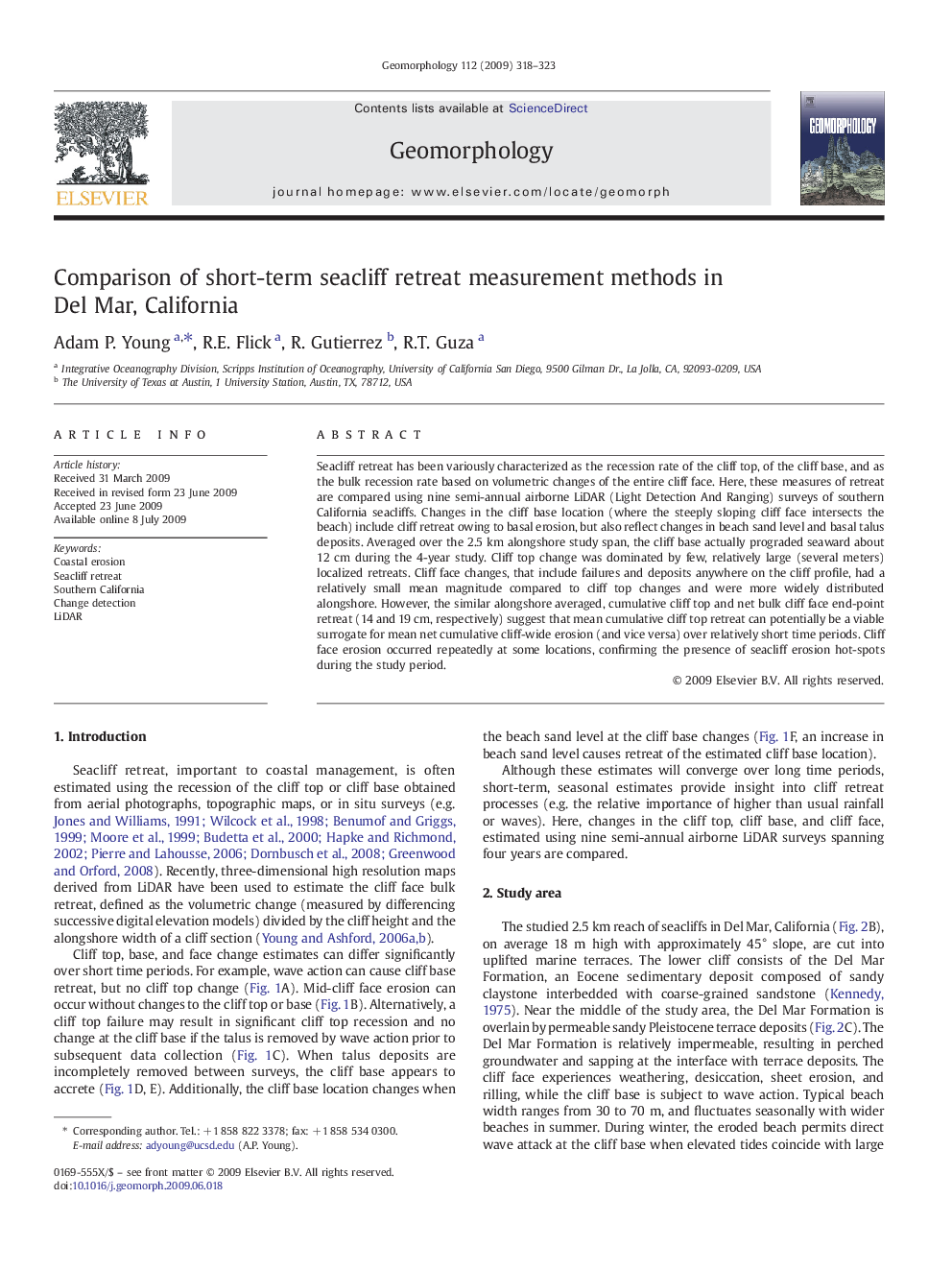| Article ID | Journal | Published Year | Pages | File Type |
|---|---|---|---|---|
| 4686242 | Geomorphology | 2009 | 6 Pages |
Seacliff retreat has been variously characterized as the recession rate of the cliff top, of the cliff base, and as the bulk recession rate based on volumetric changes of the entire cliff face. Here, these measures of retreat are compared using nine semi-annual airborne LiDAR (Light Detection And Ranging) surveys of southern California seacliffs. Changes in the cliff base location (where the steeply sloping cliff face intersects the beach) include cliff retreat owing to basal erosion, but also reflect changes in beach sand level and basal talus deposits. Averaged over the 2.5 km alongshore study span, the cliff base actually prograded seaward about 12 cm during the 4-year study. Cliff top change was dominated by few, relatively large (several meters) localized retreats. Cliff face changes, that include failures and deposits anywhere on the cliff profile, had a relatively small mean magnitude compared to cliff top changes and were more widely distributed alongshore. However, the similar alongshore averaged, cumulative cliff top and net bulk cliff face end-point retreat (14 and 19 cm, respectively) suggest that mean cumulative cliff top retreat can potentially be a viable surrogate for mean net cumulative cliff-wide erosion (and vice versa) over relatively short time periods. Cliff face erosion occurred repeatedly at some locations, confirming the presence of seacliff erosion hot-spots during the study period.
